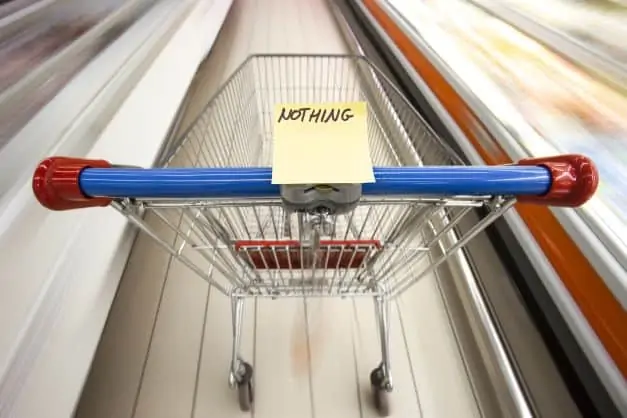By: Lisa Fichensher, New York Post
A dire truck driver shortage that’s wreaking havoc on the US economy is getting worse — and it’s being fueled partly by tough federal drug-testing restrictions that were imposed nationwide last year, industry officials told The Post.
More than 72,000 truck drivers have been taken off US roads since January 2020 because they have failed drug tests that are now required by the Drug & Alcohol Clearinghouse, a 22-month-old registry established to increase safety on US highways, according to government data.
That’s a big number, considering that the American Trucking Association — which also blames the pandemic and a lack of younger drivers, among other factors — recently pegged the industry’s overall driver shortfall at 80,000, up from 60,800 in 2018 and 50,700 in 2017. “It’s a staggering number of drivers we have lost” because of the new drug-testing rules, Jeremy Reymer, chief executive of industry recruiter DriverReach, told The Post.
Employers see the clearinghouse, which is enforced by the Federal Motor Carrier Safety Administration, as positive and necessary but also a source of concern. It’s a list that employers are required to consult before hiring a driver to avoid putting dangerous drivers on the highway. They are also required to contribute data to the list when their employees fail a random drug test.
Before the clearinghouse, “there were situations when drivers were testing positive and were job-hopping,” said Steve Keppler, co-director of Scopelitis Transportation Consulting. “They wouldn’t report their previous employer, so a carrier wouldn’t pick up on the positive test. The clearinghouse has stopped that from happening.”
Meanwhile, however, the resulting driver shortages have further crippled the nation’s supply chains. The registry’s tough new rules went into effect just three months before COVID-19 began to pummel logistics companies across the US, and have helped fuel higher prices for everything from toys to lumber to groceries.
“We do have a certain number of candidates that we’d like to hire but they can’t pass our drug tests,” Chef’s Warehouse CEO Chris Pappas told The Post. His Bronx-based company, which distributes food to high-end restaurants across the country, is still short about 1,000 drivers. The number of job applicants Pappas has been forced to turn away because of a drug violation “is a big enough number that it hurts,” he said, declining to be more specific.
Also concerning is the number of drivers who don’t try to rehabilitate their records. Drivers who land on the registry can get off the list if they complete a “return to duty” program, but so far the vast majority, 54,495 violators, have not started the program — and likely will not, experts say.
Some executives also are fretting over the disconnect between federal and state laws regarding marijuana, which is legal in 18 states for recreational use but considered an illegal substance by the US government. The biggest number of clearinghouse violations by far — 56 percent — are for marijuana use, according to federal data. (Amphetamine and methamphetamine violations account for 18 percent, while cocaine and various opioids account for 15 percent and 4 percent, respectively.) Some argue that because marijuana can stay in the body for up to 30 days, testing does not accurately reflect whether a person is driving while under the influence. “There needs to be the ability to test for real-time impairment and not just recent or long-term past use of marijuana,” Scott Duvall, director of safety and compliance for TransForce Group, which runs truck driving schools and rents out drivers, said in an email.
Another employer who asked not to be identified estimates that he rejects up to 15 percent of his truck driver job applicants because of drug violations. What’s more, the number of positive drug tests rose 13 percent in August compared with a year ago, according to an analysis of the government data by Transport Topics. “There is now a large percentage of the workforce that is no longer eligible to be a driver,” this source said.
The problem is growing more urgent by the day, officials say. At the current rate, the ATA estimates that nearly 1 million new drivers will be needed over the next decade — or 110,000 per year — to overcome turnover rates and to meet freight demands. Yet the trucking industry loses more drivers to retirement or turnover each year than it gains, said Bob Costello, chief economist for the ATA.
“This is a warning to the entire supply chain that if nothing changes, one day consumers could go to the grocery store and instead of seeing seven varieties of apples, there are only three because a shipment didn’t make it in,” Costello said.
Despite high pay — drivers make $70,000 to six figures and snag sign-on bonuses of up to $15,000 — many more have opted to quit long-haul jobs that can keep them on the road for weeks at a time. Those long-haul fleets are bleeding workers to e-commerce van delivery services like Amazon, which is “booming [and] hurting recruitment” as it offers more local jobs, according to Costello.
“We are getting people who are in their 30s and choosing driving as their second or third career choice,” added Lindsey Trent, a manager at Ryder Systems, who co-founded NextGen Trucking, which partners with high schools and launched in July. “There are a lot of kids who are not going to college and we need to identify them and introduce them to our industry.”
Chris Rose drove a truck across the country for 18 months, but said it was an “emotionally hard” job and he quit after the birth of his son. “It’s 11 hours a day of driving and it’s repetitive,” the 29-year-old Arkansas native told The Post, adding that the driver’s cab “is a small space and it leads to homesickness and a little bit of depression.”
Now, Rose drives across his home state transporting simulators to high schools where he promotes truck driving as a career — using video game technology — on behalf of the state Chamber of Commerce. His job is to tout the high pay in long hauling and encourage young adults to get on the road. “I tell kids you need to do that while you’re young before you establish yourself and to put money in the bank for a nest egg,” Rose said.
Fickensher, L. (2021). Supply chain stalled by 72,000 truckers who failed strict drug tests. New York Post. https://nypost.com/2021/11/07/supply-chain-stalled-by-72000-truckers-who-failed-drug-tests/


